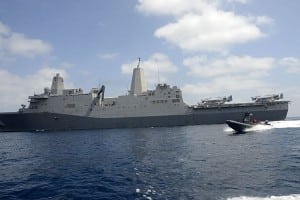
Over the next five years, the Navy is pouring $1.65 billion into amphibious ship modernization, to include weapons, combat systems, software, communications equipment and self-defense systems.The upgrades will allow the ships to operate in high threat areas and are critical for integrating the Lockheed Martin (LMT)-manufactured F-35 joint strike fighter onto amphibs in 2018, said Rear Adm. Peter Fanta, the Navy’s director of surface warfare. That $1.65 billion sum is already built into the fiscal year 2016 budget request.Despite that…













